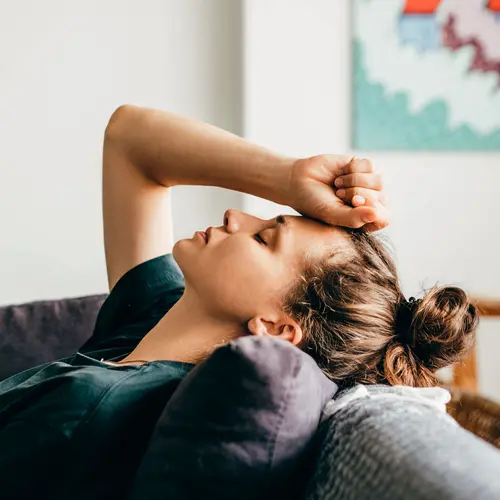Unless it causes you pain, you might never give your shoulder’s labrum a thought. This thick band of tissue surrounds your shoulder socket and keeps your shoulder joint stable. There are different kinds of labrum tears. A labrum SLAP tear happens in a specific area.
Your shoulder has three bones: the scapula (shoulder blade), humerus (upper arm bone), and clavicle (collarbone). They work together in a ball-and-socket joint where the arm connects to your trunk.
Your shoulder’s labrum isn’t a bone. It’s soft tissue that helps connect the socket part of the scapula (called the glenoid) with the head of the humerus. If the labrum tears, there’s not enough cushion between those bones. You also have a labrum in your hip sockets, which also acts like a connective cushion.
What 'SLAP' means
There are many different kinds of shoulder labrum tears. A labrum SLAP tear covers a specific area.
The upper, or superior, part of your labrum attaches to your biceps tendon. In a labrum SLAP tear, SLAP stands for superior labrum anterior and posterior. This means your labrum is torn at the top in both the front (anterior) and back (posterior) of where it attaches to the biceps tendon.
Causes
There are three ways to tear your labrum:
Overuse. Anyone who uses their shoulder to make the same motion over and over can tear their labrum. You might repeat an overhead motion at work or during activity. Think of a weightlifter who jerks a barbell up again and again.
Injury. When you slip, it's normal to stretch out your arm to break the fall. The impact on the extended arm can cause a labrum SLAP tear. You can also tear your labrum in a car wreck, by dislocating your shoulder, or while doing something that pulls hard on your arm.
Wear and tear. Car tires get worn down when you put a lot of miles on them, and so does your labrum. Day in and day out, your labrum does a lot of work. If you're 40 or older, it’s a common issue.
Symptoms
In most cases, a labrum SLAP tear doesn't hurt all the time. The pain usually happens when you use your shoulder to do a task, especially an overhead activity. You may also notice:
- A catching, locking, or grinding feeling
- An unstable feeling in the shoulder
- Loss of strength
- Low range of motion
Diagnosis
There are different ways to tear your labrum and different places where it can tear. A labrum SLAP tear is just one of those ways, and the symptoms are often similar, so it can be hard to diagnose.
Before a physical exam, your doctor will ask questions about your symptoms, pain level, and where it hurts. If there's a specific injury or event that changed the way your shoulder feels, tell your doctor.
During the physical exam, your doctor will move your arm and shoulder into different positions.
If your doctor rules out inflammation or a pinched nerve, an X-ray or MRI is the next step. An X-ray can't see your labrum, but it can show fractures that might cause the pain. Your labrum will show up on an MRI. You might need to get a shot of dye in your shoulder for contrast.
Treatment
Surgery is usually not the first treatment option. Doctors often start by prescribing anti-inflammatory drugs for pain and swelling. Once that's under control, your doctor may recommend working with a physical therapist or show you specific exercises to build your muscles back up.
If medication and exercise don't help enough, surgery may be your next step. The kind of operation depends on your injury, age, and how active you are.
Surgeons often repair labrum SLAP tears with arthroscopy, in which the doctor makes and works through small cuts in your shoulder. They place a tiny camera in your shoulder joint. This sends images to a bigger screen in the operating room. Using small tools, your surgeon can trim the torn part of your labrum, and then repair or reattach it.
Biceps Tenodesis is another common surgical approach for SLAP tears. The surgery relocates your biceps tendon to your upper arm bone (humerus). It may be done depending on the age and activity level of the patient.
Recovery After Surgery
Expect to be in a sling for a month or so to keep your arm still. After the swelling has gone down, you can move it again with guidance from a physical therapist.
Depending on your age and the extent of your tear, it could take 2 months for your labrum to heal and another 2 months to build up the same strength you felt before the tear.

